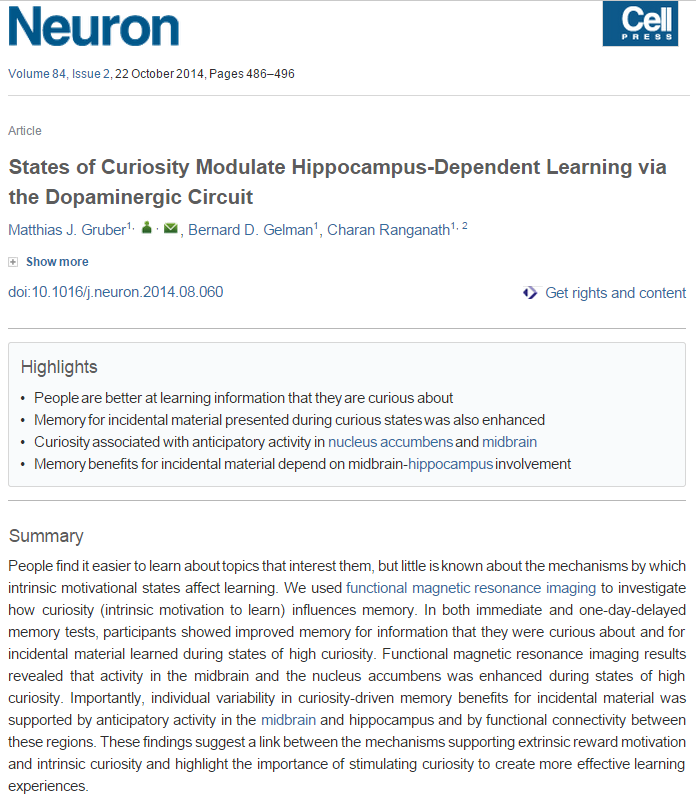Motivation enhances learning. For instance, I can ask my son the following arithmetic word problem: "There are 49 bananas in a box. Gregory takes 13 bananas. How many are left?" Or I can choose to ask the question quite differently: "In the game
Injustice Gods Among Us, the character
Flash needs 49 experience points to get promoted to the next level,
Flash currently has 13 experience points, how much experience points does
Flash need to get promoted?" Since my son likes the game, rephrasing the math question to take advantage of his interest makes it easier to make my son do his math homework. Of course, it is impossible to recast each and every lesson my son has to tackle into something interesting. And as a matter of fact, whether we like it or not, there are lessons that need to be taught that are simply boring. There is hope, however. Neuroscience research has recently demonstrated that curiosity is in fact a state of the brain. Being curious apparently puts the brain in a state that is much more conducive to learning. Uninteresting material or information totally unrelated to the topic of interest, if taught during the period when the brain is curious, has a better chance of being retained in memory. This is the major finding reported in a paper published in the journal
Neuron:
"Incidental material is learned during states of high curiosity.
" This study not only shows this through indirect tests but also provides physiological basis on how curiosity may be influencing learning. Functional magnetic resonance imaging has shown that during states of curiosity, there is increased activity in the nucleus accumbens and the midbrain specifically the substantia nigra/ventral tegmental area complex [SN/VTA]). These are regions in the brain associated with dopamine pathways (reward system):
 |
| Dopamine Pathways. In the brain, dopamine plays an important role in the regulation of reward and movement. As part of the reward pathway, dopamine is manufactured in nerve cell bodies located within the ventral tegmental area (VTA) and is released in the nucleus accumbens and the prefrontal cortex. Its motor functions are linked to a separate pathway, with cell bodies in the substantia nigra that manufacture and release dopamine into the striatum. |
The study shows that when a person is at a
high curious state, he or she remembers incidental faces better than when these faces are shown at a
low curious state.
To help my son study, I actually need just one instance that can heighten my son's curiosity. Thus, after doing a problem that is related to something that he has inclination, I can proceed with less interesting material like this:
Round the following to the nearest hundred:
It does seem to work. Perhaps, this is one reason why constructing the beginning of a lecture is important. Even one priest in the parish I attend usually starts his homily with something that may arouse curiosity, a joke or a memorable experience. Curiosity is a state of mind during which the brain is almost acting like a sponge....


Comments
Post a Comment